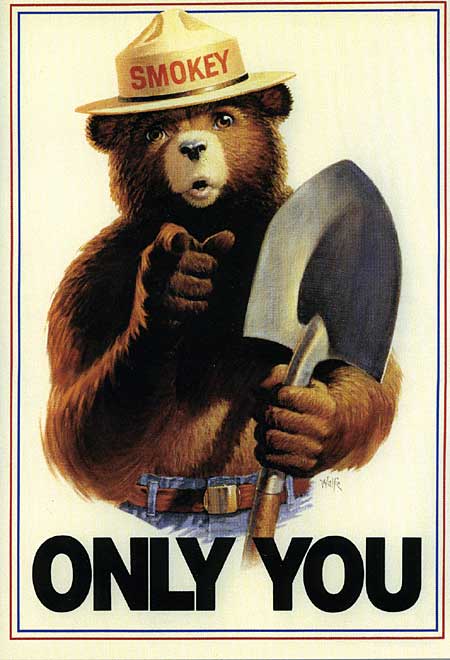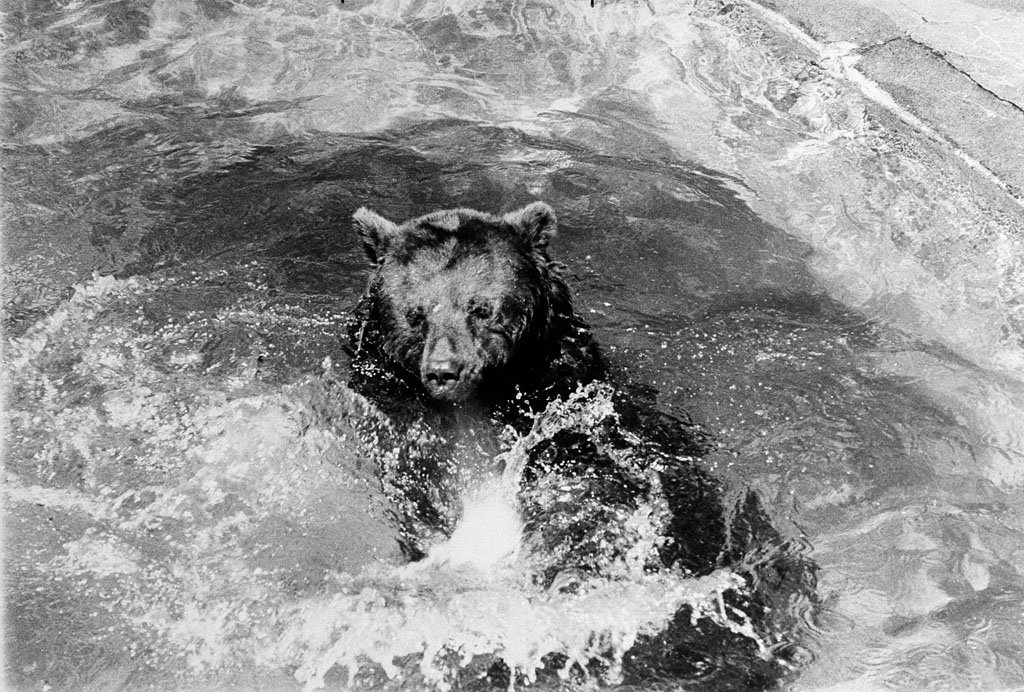Many thanks to alumnus John Cloud (PhD 2000) for suggesting the following article, one of several versions of the history of Smokey Bear. As John points out: “The Pacific Coast oil field near Los Padres National Forest” (in the following) which was fired upon by a Japanese submarine in WW II, which led directly to the concept of Smokey Bear, amazingly enough, was actually the Ellwood oil field, next to Goleta and the UCSB faculty housing complex. Postwar, when much of the Ellwood estate lands were being bulldozed for the suburban houses that still stand there, the UCSB gardeners and some Ellwood staff transplanted olive trees and Mexican fan palms to the campus, where they also still stand (and grow). If Smokey Bear had ended up as a squeezable honey bear, full of honey, instead of a symbol of excessive fire suppression, it would have been a perfect story.”
“Created in 1944, Smokey the Bear, the mascot for the U.S. Forest Service, is the longest running public service campaign in American history. Smokey came into being during World War II after a Japanese submarine fired on a Pacific Coast oil field near the Los Padres National Forest. With so many experienced firefighters and other able–bodied men off at war, the government quickly realized that it was ill–equipped to fight a major forest fire, caused by arson or started accidentally.
To raise public awareness, the War Advertising Council launched a fire–prevention poster campaign using slogans like “Our Carelessness, Their Secret Weapon.” Then in 1944, Walt Disney Studios lent the U.S. Forest Service the use of ‘Bambi’ to coincide with the premiere of the motion picture. The innocent fawn was a huge hit. So much so that the Forest Service decided it needed a permanent animal mascot. Enter friendly Smokey Bear, dressed in Ranger hat and dungarees with shovel in paw, advising bear cubs and children: “Only you can prevent forest fires.”
The fictional bear was brought to life in 1950 when firefighters rescued a scared, orphaned cub clinging to a charred tree during a New Mexico forest fire. The plight of the injured cub won America’s heart and became a living symbol of Smokey Bear. The Forest Service mascot became so popular that Congress passed an act in 1952 to take Smokey out of the public domain and place him under the Department of Agriculture. Smokey was even celebrated in a 1952 hit song written by Steve Nelson and Jack Rollins. To get the name to rhyme with the lyrics “prowlin’ and growlin’ and sniffin’ the air,” the songwriters changed Smokey Bear to “Smokey the Bear,” and that’s what most people still call him.”
Despite the Smokey’s enduring legacy, his ecological correctness quotient is low: “The Smokey Bear campaign has been criticized by wildfire policy experts in cases where decades of fire suppression and the indigenous fire ecology was not taken into consideration, helping create forests unnaturally dense with fuel. Periodic low-intensity wildfires are an integral component of certain ecosystems that evolved to depend on ‘natural fires’ for vitality, rejuvenation, and regeneration. Examples are chaparral and closed-cone pine forest habitats, which need fire for seeds and cones to sprout. Wildfires also play a role in the preservation of pine barrens, which are well adapted to small ground fires and rely on periodic fires to remove competing species.
The goal and theme of the Smokey Bear campaign was adjusted in the last decade, from “Only you can prevent forest fires” to “Only you can prevent wildfires.” The purpose is to respond to the criticism and to distinguish ‘bad’ intentional or accidental wildfires from the needs of sustainable forests via natural ‘good’ fire ecology” (source).
Editor’s note: Variations of this article can be found here and here; primary main sources include the U.S. Fire Service and references in the Wikipedia article.





